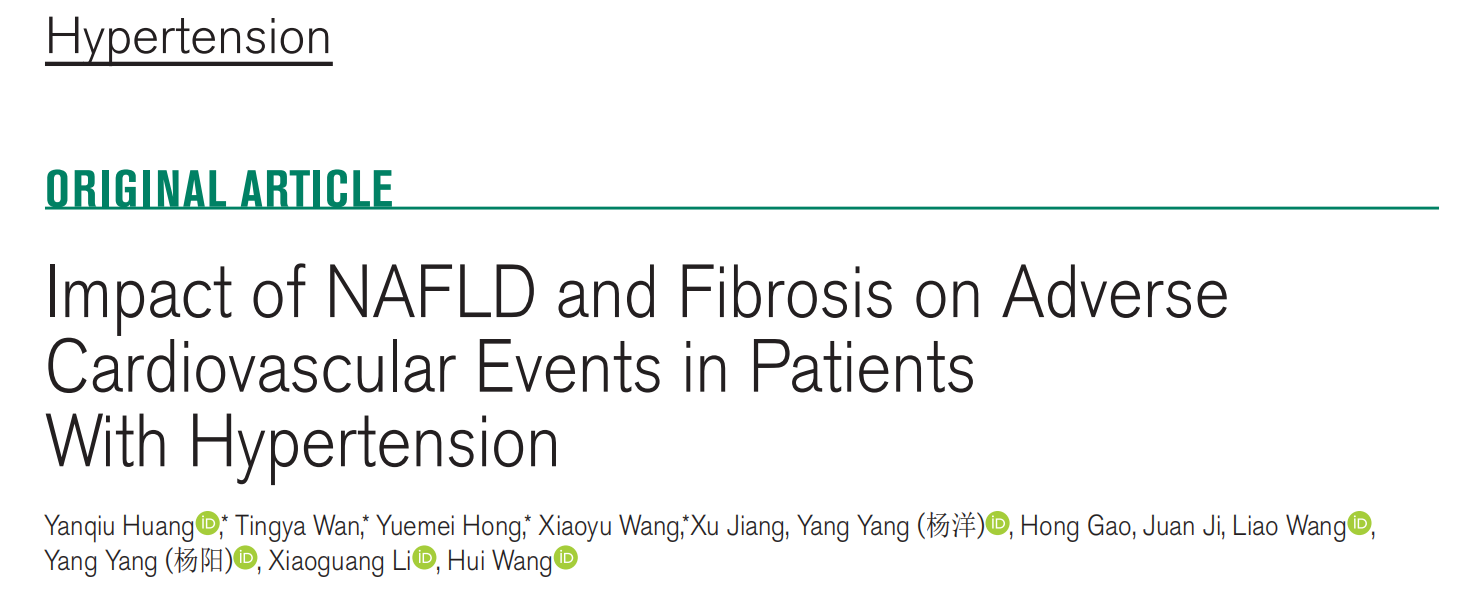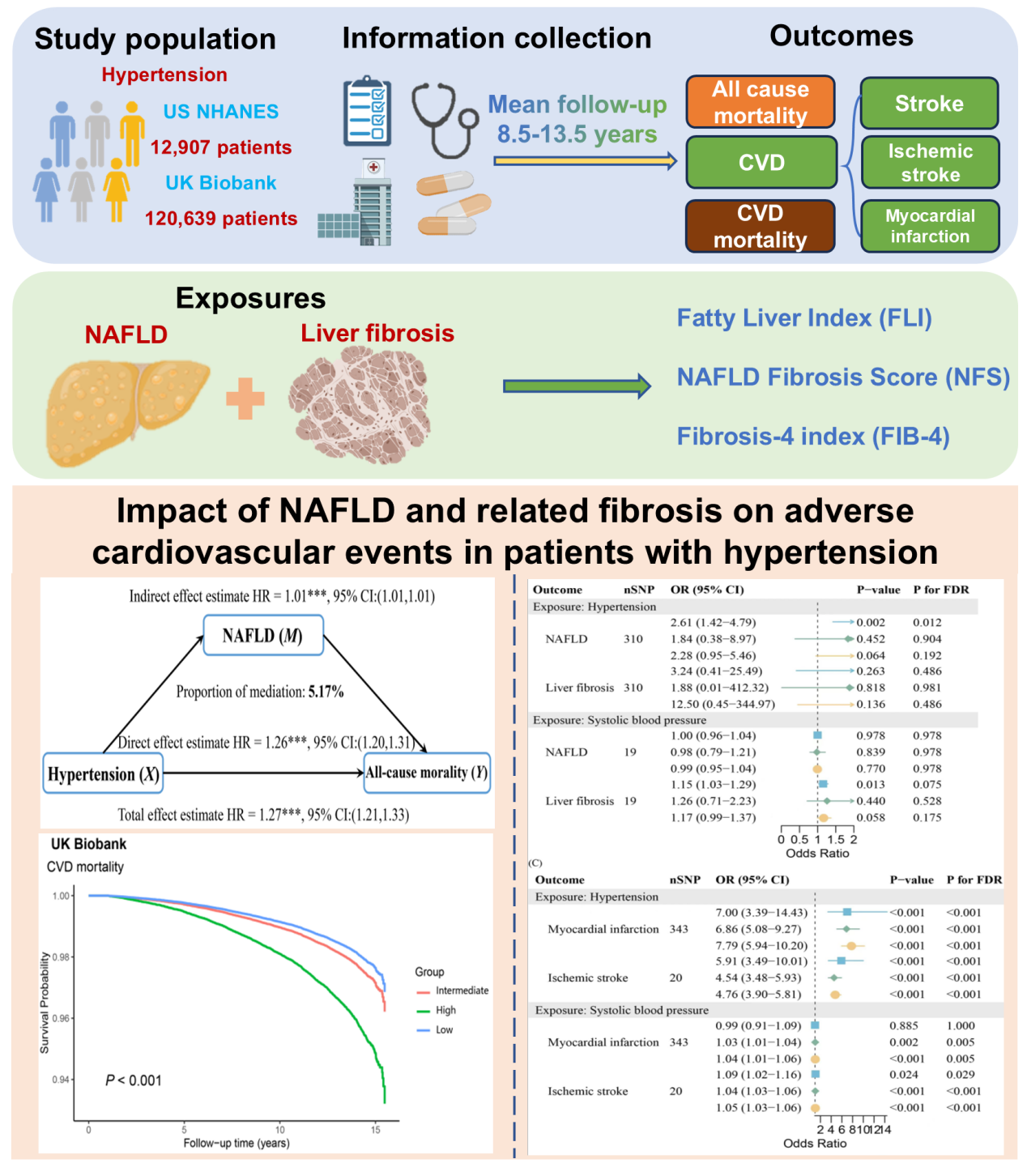Recently, Professor Wang Hui’s team from the School of Public Health published a research paper titled“Impact of NAFLD and Fibrosis on Adverse Cardiovascular Events in Patients With Hypertension” in the authoritative journal Hypertension. The study, based on large-scale population cohorts data, found that the increase in non-alcoholic fatty liver disease (NAFLD) and liver fibrosis indices is significantly associated with elevated cardiovascular risk and related mortality. Therefore, NAFLD and liver fibrosis indices are expected to serve as reliable indicators for monitoring cardiovascular disease and mortality risk in hypertensive patients.

Cardiovascular disease (CVD) is a major global public health challenge, and its prevention and control are becoming increasingly urgent with the accelerated aging of the population. Among these, hypertension, as a core risk factor for cardiovascular disease, severely threatens patients’quality of life by causing structural and functional damage to vital organs such as the brain and heart. Studies have shown that NAFLD, a significant health issue affecting over 25% of adults worldwide, has been identified as an independent risk factor for cardiovascular disease. Since hypertension and NAFLD share common metabolic risk factors such as age, obesity, and insulin resistance, the risk of cardiovascular disease is significantly higher in hypertensive patients with NAFLD. However, the impact of varying degrees of liver steatosis and fibrosis on the development and mortality of CVDin hypertensive patients remains unclear.
This study, based on data from the UK Biobank (UKBB) and the National Health and Nutrition Examination Survey (NHANES), revealed significant associations among NAFLD and the incidence and mortality of CVD in hypertensive patients. In US NHANES, 3,376 deaths were recorded during a median follow-up of 8.5 years; in UKBB, 15,864 deaths, 4,062 ischemic stroke (IS) events, and 5,314 myocardial infarction (MI) events were recorded during a median follow-up of 13.5 years. The results showed that in UKBB, NAFLD patients had a 16% increased risk of IS and a 64% increased risk of MI. In US NHANES, NAFLD patients had a 29% increased risk of all-cause mortality. Additionally, high-risk liver fibrosis further exacerbated adverse outcomes in NAFLD patients. In UKBB, high-risk liver fibrosis increased all-cause mortality risk by 91% and risk of IS by 42% in NAFLD patients. In US NHANES, high-risk liver fibrosis increased all-cause mortality risk by 95%. The study also found that NAFLD partially mediates the risk of CVD and mortality in hypertensive patients. NAFLD mediated 6.45% of the all-cause mortality risk, 5.17% of the all-cause mortality risk, and 8.20% of MI risk (Figure 1).
The findings indicate that NAFLD is not only a significant risk factor for cardiovascular disease and mortality but also plays a critical role in adverse health outcomes in hypertensive patients. The study emphasizes the importance of focusing on NAFLD in the management of hypertensive patients and the urgency of implementing early intervention and preventive measures to reduce NAFLD-related risks.

Figure 1. Abstract Diagram
The co-first authors are MS. Yanqiu Huang, MS. Tingya Wan, MS. Yuemei Hong from School of Public Health and MS. Xiaoyu Wang from Affiliated Renji Hospital. The corresponding authors are Prof. Hui Wang, Dr. Xiaoguang Li, Dr. Yang Yang from School of Public Health, and Dr. Wang Liao from Affiliated The Ninth People’s Hospital. The research was supported by the National Natural Science Foundation of China, the National Key R&D Program of China, the Science and Technology Commission of Shanghai Municipality, Natural Science Foundation of Shanghai and the Innovative research team of high-level local universities.
Original link: https://www.ahajournals.org/doi/10.1161/HYPERTENSIONAHA.124.24252




